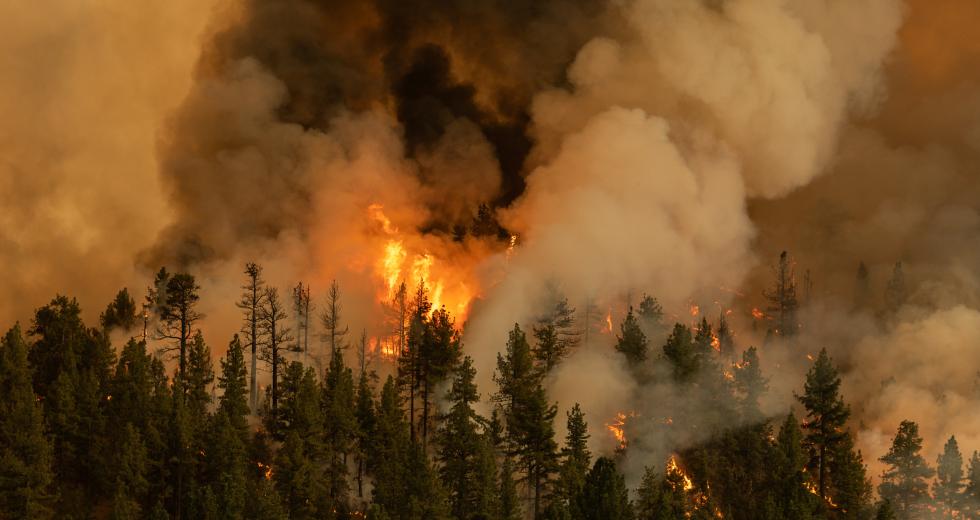Fire is combustion from fuel, oxygen, and heat; a simple chemical reaction. Tell that to thousands of families injured by rampaging fire that destroys lives and property every year. Due to human influence, three primary ingredients of wilderness fires are on the rise: the accumulation of biofuels in the forest, rising heat of the planet as a whole, and an ineffective political system of fire management.
In the last five years, we have seen the increasing and unbridled power of wildland fires on display. Currently, the Caldor Fire in El Dorado, Alpine and Amador Counties has burned over 200,000 acres and destroyed over 900 buildings. The fire is spreading with wind and atmospheric fluctuations that create cyclonic embers, projecting fire over a vast area. The fire has also impacted air quality throughout the region and suppressed the Tahoe visitor economy. At this time, the cause of the fire is undetermined.
The number and size of wildland fires continues to grow. What is contributing to the mammoth size and duration of the fire season in California and the western United States? The easy answer is climate change. Rising summer heat has intensified California’s hot summers and ongoing drought conditions. But data is more complicated and nuanced than the simply the proven rise in the Earth’s temperature.
Cal Fire, the leading state public agency for fire data, recently published its “Top 20 Largest California Wildfires” list. These large-scale fires have mostly occurred in the last seven years. Seven out the ten largest fires in the recorded history of California have happened since 2015. There have been confirmed determinations of cause in all but three fires on the list. These fires have been caused by lightning strikes (8), human activity (5) and powerline failure (4).
The largest fire on the list, the August Complex, was caused by lightning and burned over 1 million acres in August 2020. The Dixie Fire, still raging northeast of Chico, has burned nearly 1 million acres, making it the second-largest wildfire in California history. Pacific Gas and Electric Company has indicated that a power line failure near Paradise was once again the cause. In 2020, California recorded over 14,000 lightning strikes. According to Emily Denny of the digital science journal EcoWatch: “In August of 2020, over two hundred lighting strikes were recorded during a four day ‘fire siege’. Seven hundred wildfires followed.”
The data on ignition seems very solid. However, the question still remains to the other elements of the fire equation –– fuel and oxygen (or wind). Many of us think that large trees are the main fuel in a forest fire. Actually, the smaller trees, shrubs and grasses are more significant biofuels. Many mature trees have a natural defense system in their fire-resistant bark.
It has long been known that elimination of the biofuels of the forest floor is key to controlling the size and duration of a fire. In fact, the entire concept of “controlled” fires is meant to reduce the accumulation of the dried flora that can turn a “normal” fire into a raging beast. Forest science has long advocated the use of “good” fires to clean out the fuel sources, fertilize the forest floor and stimulate regrowth.
This practice has historical roots in California. Indigenous people practiced extensive use of controlled burns to limit lightning fires, create space for agriculture, and move animals into desired areas for hunting. Indigenous peoples perfected controlled fires to create travel routes, communicate, and perform pest control.
Rising temperatures have made this natural kindling of biofuels even more hazardous. Climate change is only partially responsible. The changing politics and policies of fire management is a major main reason for the increasing accumulation of materials and over growth of forests. Before the U.S. government went to a suppression-oriented approach, many natural lightning strike fires were allowed to burn out naturally. In the early 1960s, the U.S. Forest Service utilized extensive controlled fire management. In 2013, the use of controlled fire helped to mitigate and control the size of the Rim Fire in Yosemite National Park.
But this controlled fire practice has been controversial in the United States and recently has come under attack. As more high-end housing and development occurs in and near forests, public officials and fire agencies feel compelled to quickly extinguish natural fires. In 2008, California responded with new state fire hazard zoning and building code regulations to require clear zones and fire-resistant building materials. Buildings in the “Wilderness Urban Interface” (W.U.I) must have fire retardant materials in their roofs and walls. Local agencies must comply with these regulations. In the long run, this approach has a tendency to re-enforce increasing human habitation into remote and forested areas.
It will take extensive public education and political will to change forest management practices. In the meantime, state officials can hide behind the “smoke screen” of climate change, as if nothing can be done until climate change is reversed by global programs and projects. Thom Porter, the chief of Cal Fire, has expressed hesitation to expand the practice of controlled burns and recently told SFGate that “not every piece of California is ready for prescribed fire yet.” This philosophy ignores some basic management approaches that could help in the short term.
We need to change the components of the wildfire ingredients that are under our direct control: utility infrastructure improvements, forest fuel reduction programs, limiting urban encroachment into the forest, and use of “good” fires in comprehensive forest management. We also need a better method of supporting firefighting operations and financing. Climate change (or disruption) is very real. Not all of our fire problems can be attributed to the world-wide climate crisis. But solving global warming, with all its urgency, is complex and will take several international agreements. California and the West need to act now to reduce the mega fires and catastrophic impact of their destructive force.
–
Stay up to date on business in the Capital Region: Subscribe to the Comstock’s newsletter today.
Recommended For You
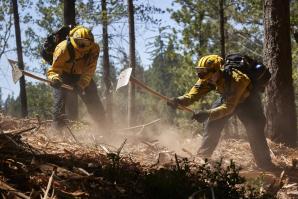
Photos: Cal Fire Trains New Crews in Auburn
The inmate fire crews used by the California Department of Forestry and Fire Protection have been depleted due to the pandemic, so the agency is training new firefighters.
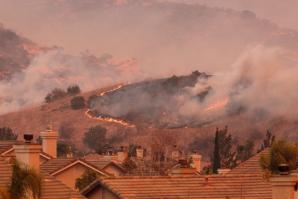
California Protects Homeowners From Having Fire Insurance Dropped — Again
The state extends temporary protection from insurance cancellations to 2.1 million Californians living in wildfire-prone regions, but long-term solutions to stabilize the market remain elusive.
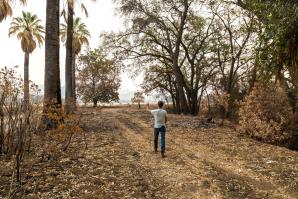
‘The Bees Will Fly Again’
Beekeeper Clay Ford on how his Vacaville-based business has fared following the LNU Lightning Complex fire
Comstock’s spoke to Ford about the impact of the fire on his beekeeping business and how he believes, “The bees will fly again.”
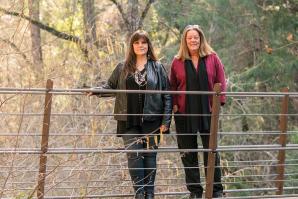
A Tarnished Past
How stakeholders in the Sierra Nevada are confronting the lasting legacy of the gold rush
Over the past two decades, a coordinated effort focused on science and policy, education and awareness, and an entrepreneurial approach to workforce development has been underway to come to grips with the lasting legacy of the mining age.



